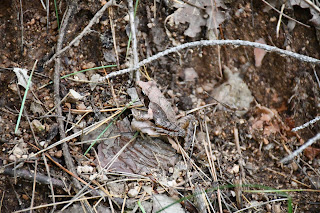Gyeongju
On our full
day in Gyeongju, we visited a number of temples, beginning with Bulguksa. As a
note to potential travellers: It is well worth it to wake up early in the
morning and see some sights while other tourists are still clambering out of
bed. When we visited, Bulguk Temple was practically bereft of visitors.
Though
Bulguksa is another site destroyed by the Japanese (this particular conflict
was the Japanese invasion of 1593), some objects of reverence escaped
near-certain doom. Among them are two pagodas, one of which contained the
world’s oldest woodblock print books, an almost seven-hundred-year-old sutra.
One of the Heavenly Kings, here training a dragon
The imposing bridge entrance of Bulguksa
The upper courtyard of Bulguksa
Lanterns with visitors' wishes
A lucky golden hog
A painting on the temple's exterior
The sutra-containing pagoda
An inner courtyard at Bulguksa
A centuries old Buddha who miraculously survived many disasters and invasions
A sea of lanterns
The entrance to Bulguksa's upper courtyard
The walls of Bulguksa
Bamboo of many colours
Black bamboo
Stacked stones at Bulguksa
An ornate gate at Bulguksa
The next
temple we visited was Seokguram, an artificial grotto built into a hillside.
Admittedly, the visit itself was a little underwhelming, as the giant stone
buddha sits behind glass and can only be approached by worshippers. However,
the construction of Seokguram (in the eighth century at that) is a marvel. As
an artificial grotto, Seokguram relies on a structure of neatly fitting stone
slabs locking together not just to form the walls, but also a perfect dome. The
spaces between the rocks also make the structure very resistant to earthquakes.
The mountains around Seokguram
Siberian chipmunk
Seokguram from outside (pictures are not permitted inside)
From
Seokguram, we headed to a nearby beach with a very peculiar sight: an
underwater tomb. The Underwater Tomb of King Munmu is a rocky mound poking out
of the sea at Yangbuk Village. King Munmu was the thirtieth king of the Silla
Kingdom, but the first and only one who left orders to be buried at sea so that
he could transform into a dragon and protect Korea after his death. Though many
subsequent Japanese invasions reveal some deficiencies in his logic, the
gesture, at any rate, is a most patriotic one.
The Underwater Tomb of King Munmu
On our way
out, we stopped by the ruins of a temple adjoined by two stone pagodas.
Afterwards, we ate lunch, which consisted of bibimbap. It was quite delicious
and completely vegetarian. I learned that day that it was possible to survive
in Korea as a vegetarian – and I have eaten many bibimbaps since.
Rice fields
A pagoda and a flowering tree
Another view of the pagoda
Yet another view of the pagoda
In the
afternoon we saw Girimsa, another Buddhist temple, though quite different from
Bulguksa and Seokguram. Girimsa is special in its very honest demeanour. Its
warm wooden exterior strikes a weary visitor as refreshingly simple and
inornate, barring some beautiful geometrically carved doors. Just a short hike
away one can also set down a comfortable trail ending at a charming waterfall.
Returning
to Gyeongju, we made a stop at Donggung Palace. The palace, which was built by
the same King Munmu who let himself be buried underwater, was mostly used for
leisurely purposes. True to his tastes, it came with a very nice pond.
The entrance to Girimsa
The wooden walls of Girimsa
A stone pagoda at Girimsa
The main temple at Girimsa
Buddhist statues
Observe the beautifully carved doors at Girimsa
Guanyin of a thousand eyes and a thousand arms
Another temple interior
A frog on the hiking trail
The waterfall
Lanterns above a bench
The entrance to Girimsa
A dog house
Donggung Palace
Beautiful wooden beams at Donggung Palace
Donggung Palace on the water
Donggung Palace reflected on the pond
Our last
destination of the day was the grassy exterior of Gyeongju. We visited
Cheomseongdae, an ancient observatory tower in the middle of Gyeongju’s famous
hillock-like graves. Made of stone, it resisted the Mongol invasions and the
conflagration to which many other buildings in the area succumbed. We also paid
a visit to the ruins of a very important pagoda, of which only the stone
foundations remain. The 64 pillar bases are a good indication of just how giant
this pagoda was.
Cheomseongdae and the mountains
Cheomseongdae
Another grave in front of the hills
Cheomseongdae up close
Graves
Graves
The Li family house near Cheomseongdae
The way to pagoda ruins
A nearby temple





















































Comments
Post a Comment